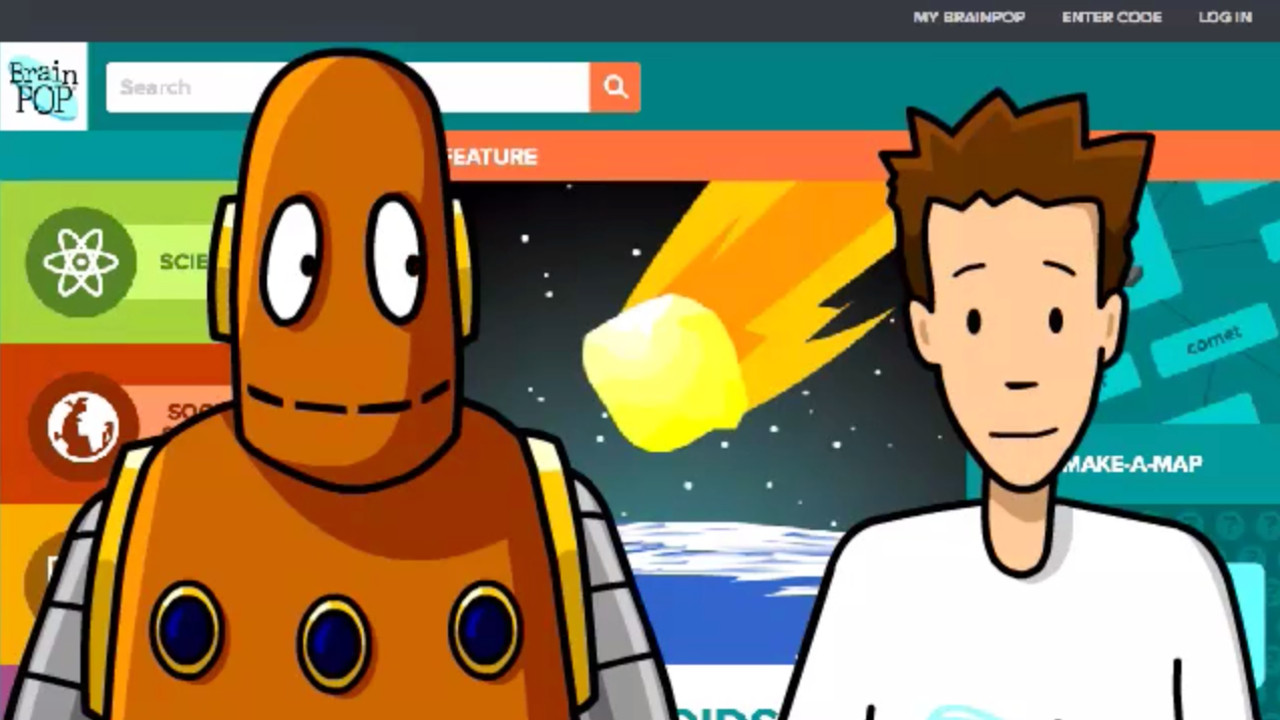BrainPOP Lesson Plan
This BrainPOP lesson plan will help you implement the teaching platform into your class

BrainPOP is an edtech platform with a robust suite of learning content that transcends grade levels and academic subject areas. It provides lesson plans, videos, games, and quizzes to support teaching and learning.
For an overview of BrainPOP and its many features, check out What is BrainPOP and How Can It Be Used for Teaching?
Here is a sample middle school lesson plan on proportional relationships that builds from content available within the BrainPOP platform. Please note that this is only one idea for building on BrainPOP’s content for a lesson as the platform is quite comprehensive.
Subject: Mathematics
Topic: Proportional Relationships
Grade Band: Middle School
Learning Objectives:
Tools and ideas to transform education. Sign up below.
At the end of the lesson, students will be able to:
- Describe a proportional relationship
- Create a visual that demonstrates proportional relationships
BrainPOP Lesson Plan: Starter Instruction
To begin the lesson, use a slideshow edtech tool such as Google Slides to show students images that illustrate a proportional relationship using real-world examples that students can easily identify. If you want to add a polling aspect to the presentation, use the Slido-add on within Google Slide, or you can use Mentimeter instead to display the initial instructional content.
After you have defined and described what a proportional relationship is, “show” students what it “looks like” in their lives. For example, you can show them a chart that demonstrates the proportional relationship between arcade games and the number of tickets needed to play each game (i.e. 1 arcade game is equal to 2 tickets, 2 arcade games is equal to 4 tickets, and so forth). Another example you could share with students is in online gaming (i.e. 1 daily quest completed in Roblox equals 10 coins, 2 daily quests equals 20 coins, and so forth).
BrainPOP Engagement
After you have completed the initial instruction on proportional relationships, let students engage within the BrainPOP platform page aligned with proportional relationships. On the page, have students first watch the movie, then explore the other activities, including the games, vocabulary, and related readings. You can also have students make-a-map, engage in creative coding, or make a movie.
You will notice that there is a lesson plan button at the top right-hand corner of the page that provides more details on those three activities. And, you can always use these as a base and modify based on your own creativity and instructional needs.
Independent Learning
After students have engaged with the content on the BrainPOP platform, provide them with space to demonstrate their learning. More specifically, ask students to choose any real-life area on which to focus (you can remind them of the beginning of the lesson during which you provided the arcade and Roblox examples).
Once students have their area of focus selected, have them visually demonstrate two different proportional relationships. Students should also include their own definition of what a proportional relationship is. It may be helpful to provide a free infographic edtech tool for students to create their visuals, such as Canva.
How Does BrainPOP Connect with Academic Standards?
BrainPOP has a robust academic standards alignment feature that is prominently connected to content and lessons. In addition to Common Core State Standards (CCSS), there is alignment with Next Generation Science Standards (NGSS) as well as international education standards from Australia, Canada, England, and Scotland.
What If Students Want to Engage with BrainPOP at Home?
An online section within the BrainPOP platform is available and dedicated to home activities organized by grade bands. In addition to activities ideas being accessible through Google Docs, there is a family tips PDF, distance learning plans, and video tutorials.
BrainPOP is an exciting and comprehensive platform with learning content for all ages and subject-matters. Try this lesson plan and see if it helps to elevate your teaching and learning in your classroom!
Dr. Stephanie Smith Budhai is faculty member in the College of Education and Human Development at the University of Delaware, focusing on Educational Technology, Learning Design, and Justice-centered Pedagogies. She holds two national education technology leadership positions on the Information Technology Council and as Chair of the Culture and Climate Committee for the Society for Information Technology and Teacher Education (SITE). She holds a Ph.D. in Learning Technologies, and a M.S. in Information with a specialization in Library and Information Science, and K-12 teaching certifications in Technology Education, Instructional Technology and Business, Computers, Information Technology, Special Education and Elementary Education. Dr. Smith Budhai is the 2021 SITE Emerging Leader and the 2017 ISTE Awardee for Excellence in Teacher Education. She is also a Nearpod, and VoiceThread Certified Educator. Dr. Smith Budhai has more than a decade of online teaching experience, and has published myriad books (two have been translated into Arabic), articles, and invited editorials surrounding the use of technology and online learning in education. A few of her book publications include:
- Critical AI in K-12 Classrooms: A Practical Guide for Cultivating Justice and Joy
- Best Practices in Engaging Online Learners through Active and Experiential Learning Strategies
- Leveraging Digital Tools to Assess Student Learning
- Nurturing Young Innovators: Cultivating Creativity in the Classroom, Home and Community
- Increasing Engagement in Online Learning: Quick Reference Guide
